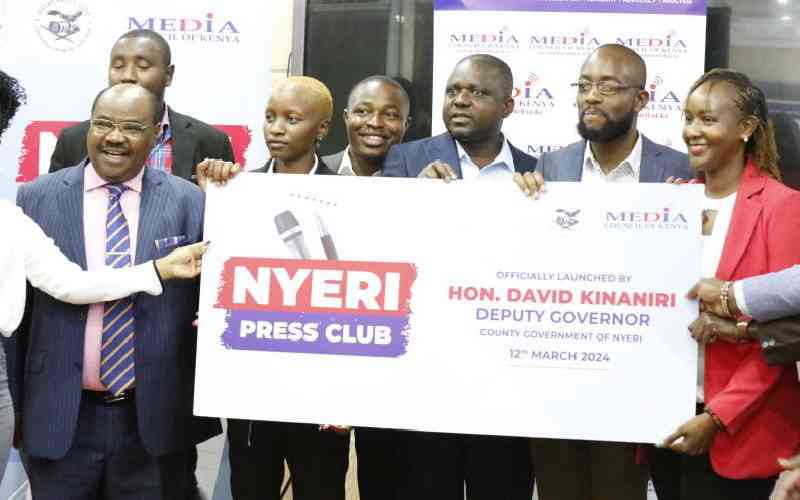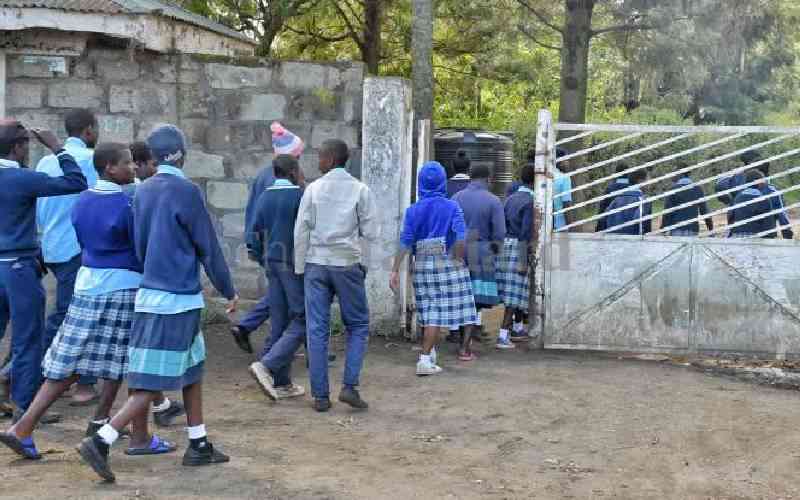NAIROBI: The number of institutions offering journalism and media studies in the country has grown. This growth in the numbers could be attributed to the need for professionals in the industry, initially created by the liberation of the airwaves in 1992 and the realisation that journalism is a profession that requires specific skills.
It was therefore necessary to have discussions on the minimum qualifications required for those interested in pursuing journalism as a career.
Many aspiring professionals and individuals have gone to various institutions to acquire the said minimum requirements.
A number of the universities and colleges are running several programmes in journalism - the quality of which I am concerned about. Journalism, especially photography and broadcast, needs a lot of practical training - yet many of the colleges have no studios or even cameras.
Again in a number of the colleges, the tutors are not qualified - not because we don’t have enough qualified journalists to teach journalism, but many people claim to know something about journalism - or consider journalism a free-flow profession. I have seen a number of journalism courses filled with so many unrelated units and subjects that I wonder what value they add to the students. In private colleges, you even get diploma holders - who have not practised anywhere - teaching diploma students.
In the meantime, the industry has been complaining about the quality and relevance of some of the courses being offered. Editors have, for example, raised queries on the skills imparted in journalism training in the institutions and the credibility of the courses offered.
Indeed, currently there is no single standard training curriculum for journalists in the country.
That is why the Media Council of Kenya has prepared a very professional and comprehensive national standardised curriculum for Diploma in Journalism that will be used in all institutions dealing with journalism training.
The curriculum for print, broadcast and online journalism comes complete with training manuals and teaching references, laying emphasis on practical and on-the-job training skills development.
MoUs are being worked on with the Commission for Higher Education and the Kenya National Examination Council for implementation, supervision and examination.
MCK was assisted in the development by the Technical and Vocational Education and Training (TVET) team from the Ministry of Education. MCK also consulted with the Commission for Higher Education. The Kenya Institute of Curriculum Development made the approvals. The curriculum provides for industry-driven courses and lays emphasis on specialisation for the trainees. It comes with specifically-tailored course teaching modules that seek to fill in the competence gaps that the industry has been yawning for.
MCK has set up an industry-led team for college inspection and accreditation that will move around the country to ensure training institutions have the requisite qualified tutors and equipment. Under the Media Council Act 2013 section 6(1)(f), the Media Council of Kenya is required to set standards, in consultation with the relevant training institutions, for professional education and training of journalists.
MCK accredits journalists and foreign journalists by certifying their competence, authority or credibility based on the quality and training of journalists in the country, including maintaining a register of journalists, media enterprises and other related matters.
With the law and the curriculum now ready, the training of journalism is set for a new phase and, probably, this will help in improving the profession and ensuring the training responds to industry needs.
Stay informed. Subscribe to our newsletter
 The Standard Group Plc is a
multi-media organization with investments in media platforms spanning newspaper
print operations, television, radio broadcasting, digital and online services. The
Standard Group is recognized as a leading multi-media house in Kenya with a key
influence in matters of national and international interest.
The Standard Group Plc is a
multi-media organization with investments in media platforms spanning newspaper
print operations, television, radio broadcasting, digital and online services. The
Standard Group is recognized as a leading multi-media house in Kenya with a key
influence in matters of national and international interest.
 The Standard Group Plc is a
multi-media organization with investments in media platforms spanning newspaper
print operations, television, radio broadcasting, digital and online services. The
Standard Group is recognized as a leading multi-media house in Kenya with a key
influence in matters of national and international interest.
The Standard Group Plc is a
multi-media organization with investments in media platforms spanning newspaper
print operations, television, radio broadcasting, digital and online services. The
Standard Group is recognized as a leading multi-media house in Kenya with a key
influence in matters of national and international interest.








